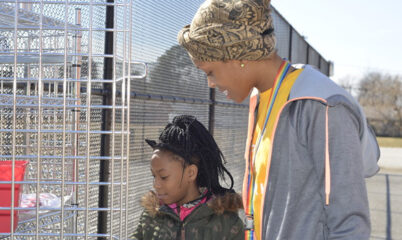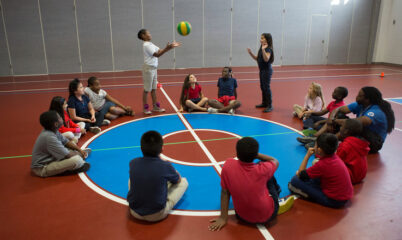Meet new physical activity requirements without sacrificing instruction time
If you are a principal or district administrator in Tennessee, you probably spent this summer pouring over your schedules to try to carve out almost 50% more time for recess each week, thanks to a new state law increasing the amount of physical activity required in schools.
There truly aren’t enough hours in a day—but when recess is done right, schools can gain back 35 minutes of instructional time each week. That's the average that teachers at Playworks schools say they recoup through decreased conflict and quicker transitions back to class. That’s because these schools leverage recess as an opportunity both to increase kids' physical activity and to develop the social and emotional skills students need to come back to class ready to learn.
When Nashville principal Celia Conley decided to re-frame Antioch Middle School's approach to recess, she saw a change almost immediately. "When kids come back to class they are sweaty. They smell like they’ve been at recess, not just on a social break," said Conley. "My teachers love it. They are getting their energy out before class."
"I understand principals have limited funds to invest in recess. It is not a tested subject, so it is hard to bite the bullet," she noted. "But if 80% of my headache stems from recess and teachers are having to deal with behavior incidents from recess in math class, it is worth it."
Here are five recess strategies to try this fall:
- Rock Paper Scissors: Nothing eats into learning time like conflicts that start on the playground. Make Rock Paper Scissors part of your school’s culture so children solve their own conflicts before they escalate.
- Smooth Transitions: Often, challenging behavior flares up during transitions to and from recess. Plan and introduce engaging and fun transitions to move smoothly back to classroom learning.
- Inclusive Games: Introduce rotational games and new tag games to the playground. These games will get dozens of students active and involved—not wasting their precious recess minutes standing on the sidelines or arguing with other students.
- Safe Spaces: You may need to get creative to ensure students have space to play without getting hurt. Have a blacktop, but no lines? Work with community members to put down some paint. Don’t know what to do for indoor recess? Consider any room or even a hallway.
- Professional Development: Give every recess monitor proactive tools to manage recess and groups of kids. Playworks workshops and consultative visits give adults the confidence and skills to make recess fun, active, and inclusive. Playworks serves schools and districts anywhere in the country and is an approved vendor for Nashville Public Schools.
Want a thought partner? We’d love to chat about how you can transform recess at your school. Get in touch for a free, 15-minute recess consultation.



